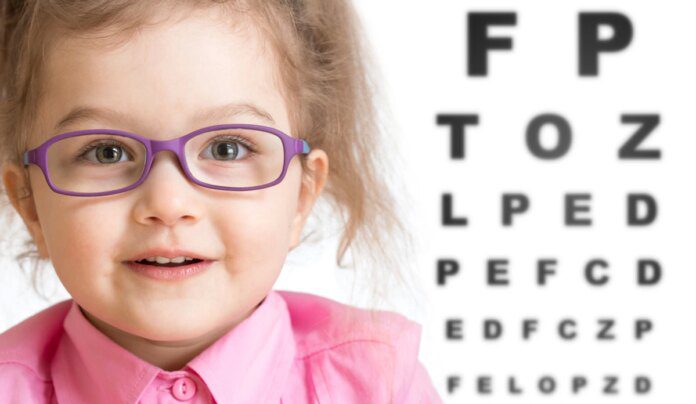Have you noticed that your little one squints when looking at the TV screen or has trouble understanding what is written on the blackboard at school? They may suffer from myopia, one of the most common childhood vision problems.

Myopia can affect your child’s daily activities. Left untreated, the inability to see distant objects clearly can worsen with age. Therefore, the disease must be diagnosed and treated as early as possible. Controlling the progression of the disease can improve long-term eye health and reduce the risk of more serious eye conditions in adulthood. If you are worried that you might suffer from myopia, find out what symptoms this disease gives, what are the causes and treatment options!
Recognize myopia from the first symptoms
Myopia is a common vision condition. According to specialist ophthalmologist Călin Edward Florian, it is a disease in which “nearby objects are seen clearly, but the most distant ones are blurred. This occurs when the eye focuses light rays incorrectly, in front of the retina, instead of focusing them on the retina’. The doctor notes that symptoms include blurred vision when the child looks into the distance, the need to partially close the eyelids to see clearly, headaches caused by eye strain. A child with myopia sits closer to screens, prefers a seat in front of the blackboard at school, ignores distant objects, blinks or rubs his eyes frequently.
Why does it appear?
A process known as emmetropization leads to the precise development of the correct focusing power of the cornea and lens so that the entire eye is in perfect focus. The mechanisms that disrupt this process in myopia still remain obscure. Doctor Călin Edward Florian explained: “The eye has 2 transparent structures, which work like lenses, with a role in focusing images on the retina: the cornea and the lens. The cornea has a curved shape and forms the front surface of the eye. The lens is inside the eye. In a normally shaped eye, images are focused on the retina. When the eyeball is longer than normal or when the surface of the cornea has a greater curvature, images will focus improperly in front of the retina, and distant objects appear blurry. Myopia is a refractive error like hypermetropia or astigmatism’.
How to prevent and treat myopia?
Ophthalmological experts suggest that moderate exposure to sunlight has a positive impact on myopia and overall eye health. A recent study conducted at the University of Waterloo shows that those children who spent an extra hour outdoors per week reduced their risk of developing myopia by 14%. If myopia is diagnosed, doctor Călin Florian claimed that “the goal of treatment is to improve vision either through the use of corrective lenses, which counteract the increased length of the eye or the increased curvature of the cornea (glasses or contact lenses), or through interventions of refractive surgery’.
Read also: How to properly treat a pitcher
Expert advice
Dr. Călin Edward Florian, ophthalmology specialist
For children and adolescents, the American Academy of Ophthalmology recommends eye exams at 6 months and 3 years, during the first year of school and every 2 years during the school years. Myopia can be diagnosed through an eye exam that includes an evaluation of visual acuity and eye refraction. He can administer drops to dilate the pupils and assess the overall health of the eye or to accurately determine the refractive error (in children, adolescents and young adults). A rare condition commonly seen in patients with high myopia is retinal detachment. This is a medical emergency where response time is critical. It is manifested by bright flashes, the sudden appearance of multiple floating spots in the field of vision, a shadow like a curtain superimposed over the field of vision.







































